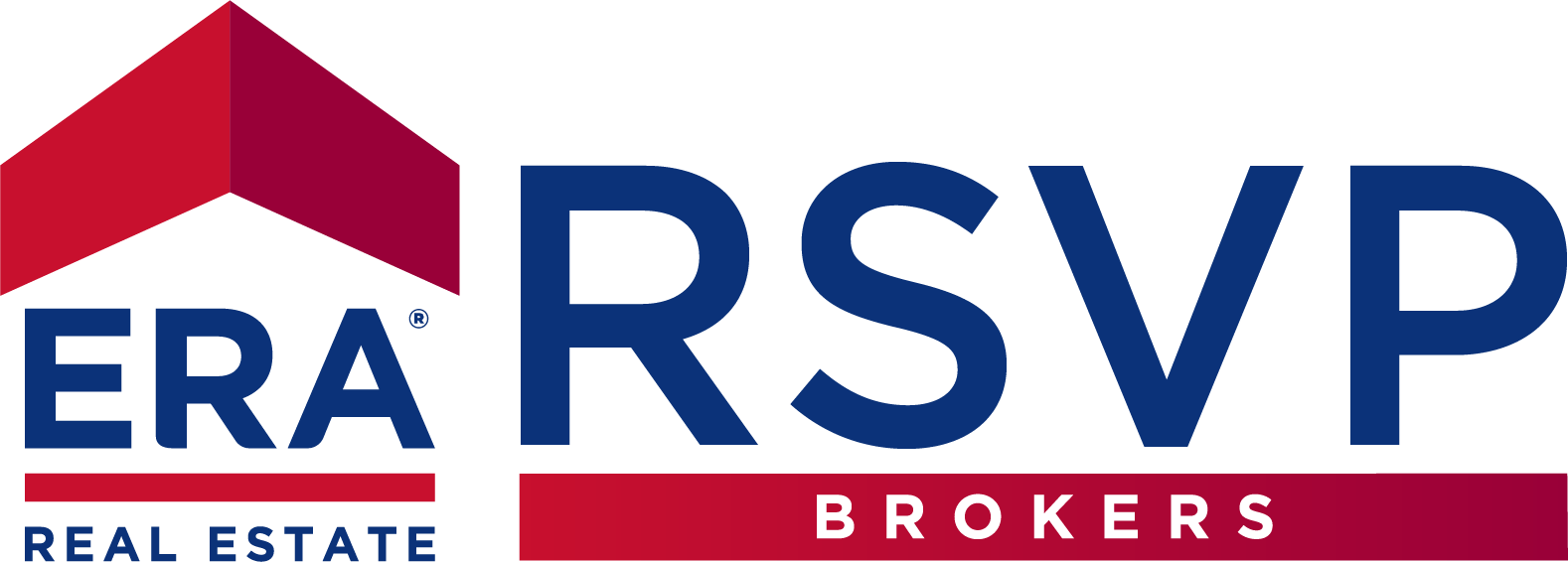Purchasing a home represents a significant milestone, blending excitement with numerous decisions and considerations. For many, it’s more than just acquiring property; it’s about finding a place to cultivate memories and establish a sense of belonging. The process, however, can seem intricate, filled with numerous steps and potential hurdles. From determining your budget to navigating the complexities of mortgage options, each phase demands attention and informed choices. As you embark on this journey, a well-rounded understanding of the home-buying process can transform what might seem overwhelming into a manageable, even enjoyable experience. This guide aims to provide clarity, offering insights and practical advice to help you confidently step into homeownership.

Understanding Your Financial Readiness
Before diving into the home-buying process, evaluating your financial readiness is crucial. This initial step helps set realistic expectations and ensures that you’re prepared for the financial commitment that comes with owning a home. Start by reviewing your credit score, as it plays a pivotal role in securing a mortgage. A higher credit score typically translates to better interest rates and loan terms. Obtain a copy of your credit report and address any discrepancies or areas for improvement.
Next, assess your savings. A substantial amount will be required for the down payment, closing costs, and potential moving expenses. The down payment typically ranges from 3% to 20% of the home’s purchase price, depending on the loan type and lender requirements. Closing costs, which include fees for services like appraisals, inspections, and legal paperwork, generally account for an additional 2% to 5% of the home’s price. Ensure you also have an emergency fund to cover unexpected expenses that might arise after purchasing your home.
Creating a detailed budget is another essential aspect of financial readiness. Calculate your monthly income and subtract all current expenses to determine how much you can comfortably allocate toward a mortgage payment. Lenders often use the debt-to-income ratio (DTI) to evaluate your ability to manage monthly payments. This ratio compares your monthly debt payments to your gross monthly income. Aim for a DTI of 36% or lower, although some lenders may allow a higher ratio based on other factors.
Additionally, consider getting pre-approved for a mortgage. Pre-approval not only gives you a clear picture of what you can afford but also positions you as a serious buyer in the eyes of sellers. This process involves a thorough review of your financial situation by a lender, who will then provide a conditional commitment for a specific loan amount. With your financial groundwork in place, you’ll be better equipped to embark on the exciting journey of finding your new home.
Securing Financing
Securing financing is a pivotal step in the home-buying process, determining your ability to purchase your desired property and setting the foundation for your financial commitment. Understanding the various financing options and preparing the necessary documentation ensures a smoother experience. Start by exploring different mortgage types to find the one that best fits your financial situation and homeownership goals.
Fixed-rate mortgages have a consistent interest rate and monthly payment throughout the loan term, typically 15, 20, or 30 years. They offer stability and predictability, making them a popular choice for long-term homeownership.
Adjustable-rate mortgages (ARMs) have interest rates that adjust periodically based on market conditions. They often start with a lower rate than fixed-rate mortgages but can fluctuate, resulting in variable monthly payments. ARMs might be suitable if you plan to sell or refinance before the rate adjusts.
FHA loans, backed by the Federal Housing Administration, are designed for first-time homebuyers or those with lower credit scores. They require a smaller down payment, usually around 3.5%, making homeownership more accessible.
VA loans are available to veterans, active-duty service members, and eligible surviving spouses. VA loans offer competitive interest rates, require no down payment, and do not mandate private mortgage insurance (PMI).
USDA loans, offered by the United States Department of Agriculture, support homebuyers in rural and suburban areas. They require no down payment and provide favorable terms to those who meet income and location criteria.
Once you’ve selected a mortgage type, the next step is getting pre-approved. Pre-approval involves submitting a mortgage application and providing financial documentation, such as pay stubs, tax returns, bank statements, and credit reports. The lender evaluates your financial health to determine the loan amount you qualify for and the interest rate you’ll receive. Pre-approval strengthens your position as a serious buyer and provides a clear picture of your budget.
During this process, it’s essential to maintain financial stability. Avoid significant purchases, job changes, or new credit applications, as these can affect your credit score and loan approval. Your lender will conduct a final credit check before closing, so it’s crucial to keep your financial situation consistent.
Finally, compare loan offers from multiple lenders to ensure you’re getting the best terms and rates. Consider the interest rate, loan term, closing costs, and any additional fees. Working with a mortgage broker can also help you navigate these options and find the most competitive loan. Securing financing requires careful consideration and preparation, but with the right approach, you can obtain a mortgage that supports your homeownership goals and fits your financial plan.
Choosing the Right Location
Selecting the ideal location for your new home is a decision that impacts not just your lifestyle, but also the future value of your investment. Begin by identifying your priorities and what you envision for your living environment. Consider factors such as proximity to work, quality of local schools, access to public transportation, and availability of amenities like parks, shopping centers, and medical facilities. These elements contribute significantly to the convenience and enjoyment of your daily life.
Researching neighborhoods is an essential step in this process. Spend time visiting different areas at various times of the day to get a sense of the community dynamics. Observe the level of activity, noise, and overall vibe. Engage with locals if possible, as they can provide valuable insights into the pros and cons of living in the area. Additionally, online resources and local real estate agents can offer detailed information on crime rates, future development plans, and historical property values, helping you make an informed decision.
Another critical aspect to consider is the potential for property value appreciation. Look for neighborhoods that show signs of growth and development. Indicators such as new businesses opening, infrastructure improvements, and increasing property prices can signal a promising investment. However, balance this with your current needs and lifestyle preferences. An up-and-coming area might offer better long-term gains, but it should also meet your immediate requirements.
Evaluate the long-term suitability of the location. Think about your future plans and how they align with the area. For instance, if you’re planning to start a family, the quality of schools and availability of child-friendly amenities will be important. If you foresee a longer commute to work, assess how this might affect your daily routine and overall quality of life.
Making a well-informed choice about location ensures that your new home will be a place where you can thrive and enjoy for years to come. This thoughtful consideration not only enhances your living experience but also supports the stability and growth of your investment.
Deciphering Home Types and Features
Choosing the right type of home involves understanding the various options available and deciding which best suits your needs and lifestyle. From single-family homes to townhouses and condominiums, each type offers distinct advantages and potential drawbacks.
Single-family homes are standalone properties that provide the most privacy and freedom. They typically come with a yard and more interior space, making them ideal for families or those who value outdoor activities and space for hobbies. However, they often require more maintenance and come with higher costs for upkeep and utilities.
Townhouses offer a balance between single-family homes and condominiums. These multi-story properties share walls with adjacent units, providing a compromise between space and cost. Townhouses usually have small yards or patios and might include community amenities such as pools or fitness centers. They require less maintenance than single-family homes but still provide a level of independence and outdoor space.
Condominiums, or condos, are units within larger buildings or complexes, often managed by homeowners’ associations (HOAs). Condos typically come with shared amenities like gyms, pools, and security services. They require minimal maintenance, as the HOA takes care of exterior upkeep and common areas. However, this convenience comes with monthly HOA fees, and owners may have less control over certain aspects of their property due to HOA regulations.
When selecting a home, consider the features that are most important to you. Think about the number of bedrooms and bathrooms you need, the layout and flow of the home, and specific features such as a home office, garage, or basement. Pay attention to the overall condition of the home, including the age of major systems like the roof, HVAC, plumbing, and electrical. Older homes might have more character but could require more immediate repairs or updates.
Energy efficiency is another important factor. Homes with modern, energy-efficient appliances, windows, and insulation can save you money on utility bills and reduce your environmental footprint. Look for features such as Energy Star-rated appliances, double-pane windows, and efficient heating and cooling systems.
Ultimately, selecting the right home type and features involves balancing your current needs with your long-term goals. Prioritizing what matters most to you will help ensure that your new home supports your lifestyle and future aspirations.
Navigating the Home Search
With your financial readiness assessed and preferred location identified, the next step is to navigate the home search effectively. This phase can be both exciting and overwhelming, as you explore various properties that could potentially become your new home. To streamline the process, it’s essential to be organized and strategic.
Start by defining your must-haves and nice-to-haves. Create a list of essential features that your new home must possess, such as the number of bedrooms, bathrooms, and specific amenities like a garage or a large yard. This list will help you stay focused and avoid wasting time on properties that don’t meet your basic criteria. Additionally, list features that would be desirable but are not deal-breakers, such as a pool, proximity to a park, or a modern kitchen. This prioritization ensures that you find a home that meets your needs while still considering extras that enhance your living experience.
Use online real estate platforms to research available properties. These websites offer comprehensive listings with photos, virtual tours, and detailed descriptions, allowing you to narrow down your options from the comfort of your home. Set up alerts to notify you when new properties that meet your criteria become available, ensuring you don’t miss out on potential opportunities.
Working with a real estate agent can significantly simplify your home search. Agents have access to a broader range of listings, including those not publicly advertised, and can provide expert advice tailored to your needs. They can schedule viewings, negotiate with sellers, and guide you through the complexities of the purchasing process. When choosing an agent, look for someone with a deep understanding of your preferred area and a track record of successful transactions.
When visiting properties, take detailed notes and photos to help you remember each home’s unique features and shortcomings. Pay attention to the neighborhood, overall condition of the property, and any signs of potential issues like water damage, foundation cracks, or outdated systems. Bring a checklist to ensure you evaluate each home consistently.
It’s also helpful to envision yourself living in the space. Consider how your furniture will fit, the flow of daily activities, and how the home aligns with your lifestyle. This visualization can help you determine if a property feels right and meets your practical needs.
By staying organized and focused during your home search, you’ll be better positioned to find a property that aligns with your needs and preferences, setting the stage for a successful home-buying experience.
Making an Offer and Negotiating
Once you’ve found a home that meets your criteria, the next step is making an offer. This phase involves careful consideration and strategic negotiation to ensure you secure the property at a fair price. Understanding the process and preparing thoroughly can enhance your chances of success.
Begin by researching the market value of the home. Look at comparable properties, known as “comps,” that have recently sold in the area. These should be similar in size, condition, and features to the home you’re interested in. This information helps you determine a reasonable offer that reflects the property’s true market value. Your real estate agent can provide a comparative market analysis (CMA) to support your decision.
When crafting your offer, consider including contingencies to protect your interests. Common contingencies include financing, inspection, and appraisal clauses. A financing contingency allows you to withdraw your offer if you cannot secure a mortgage, while an inspection contingency gives you the option to renegotiate or back out if the home inspection reveals significant issues. An appraisal contingency ensures the property’s value matches the offer price, preventing you from overpaying.
The offer process typically involves submitting a written proposal to the seller, detailing the price, contingencies, and any other terms. This document, known as the purchase agreement, becomes a binding contract once both parties sign it. Along with the offer, you’ll usually provide an earnest money deposit, demonstrating your commitment to the purchase. This deposit is typically 1% to 3% of the offer price and is held in escrow until closing.
Negotiation is a critical part of making an offer. Be prepared for the seller to counteroffer, proposing different terms or a higher price. Stay flexible and open to compromise while keeping your budget and priorities in mind. Your real estate agent can offer valuable advice and negotiate on your behalf, aiming to reach a mutually beneficial agreement.
Throughout this process, maintain clear communication with your agent and lender. Ensure that your financing is in order and be ready to act quickly if adjustments to your offer are necessary. Timeliness can be crucial, especially in competitive markets where multiple offers are common.
If your offer is accepted, you’ll move forward with the home inspection and finalizing your mortgage. If not, use the experience to refine your approach for future offers. Making an offer and negotiating can be complex, but with thorough preparation and professional guidance, you can navigate this stage confidently and move closer to owning your new home.
Home Inspections and Appraisals
After your offer is accepted, the next step is conducting a home inspection and appraisal. These assessments are crucial in ensuring that the property is in good condition and worth the agreed-upon price. Understanding their importance and what to expect can help you navigate this phase effectively.
A home inspection is a thorough examination of the property’s condition, performed by a licensed inspector. This process typically covers structural components like the foundation, roof, and walls, as well as systems such as plumbing, electrical, and HVAC. The inspector also checks for signs of water damage, mold, pests, and other potential issues. Attending the inspection allows you to ask questions and gain a better understanding of the property’s condition.
The inspector will provide a detailed report outlining any problems found during the inspection. Review this report carefully with your real estate agent. Significant issues, such as structural damage or outdated systems, may warrant renegotiation with the seller. You can request repairs, a price reduction, or credits at closing to cover the cost of necessary repairs. If the inspection reveals severe issues that cannot be resolved to your satisfaction, you may have the option to withdraw your offer, depending on the contingencies in your purchase agreement.
An appraisal, on the other hand, is an evaluation of the property’s market value, conducted by a licensed appraiser. This step is required by your lender to ensure that the home is worth the amount you are borrowing. The appraiser considers various factors, including the home’s condition, size, location, and comparable recent sales in the area. The appraisal report provides an objective estimate of the property’s value.
If the appraisal matches or exceeds the purchase price, the loan process continues as planned. However, if the appraisal comes in lower than the offer price, you’ll need to address the discrepancy. Options include negotiating with the seller to lower the price, increasing your down payment to cover the difference, or challenging the appraisal with additional supporting evidence. Your real estate agent can guide you through these scenarios and help determine the best course of action.
Both the inspection and appraisal are critical steps that safeguard your investment. They provide essential information about the property’s condition and value, allowing you to make informed decisions. By addressing any issues that arise during these assessments, you can proceed with confidence, knowing that your new home meets your expectations and is a sound financial investment.
The Closing Process
The closing process is the final step in the home-buying journey, where ownership is officially transferred from the seller to the buyer. This phase involves several key steps, and understanding each one can help ensure a smooth and successful transaction.
First, a closing date is set, typically agreed upon by both the buyer and seller. Leading up to this date, you will need to complete a final walk-through of the property, usually within 24 hours before closing. This inspection ensures that the home is in the expected condition and that any agreed-upon repairs have been made. It’s your last opportunity to verify that everything is in order before taking ownership.
Next, you’ll receive a Closing Disclosure document from your lender at least three business days before closing. This document outlines all the final terms of your loan, including the interest rate, monthly payments, and closing costs. Review this disclosure carefully to ensure all details are accurate and match your expectations. If you notice any discrepancies, contact your lender immediately to resolve them before closing.
On the closing day, you’ll meet with various parties, including the seller, real estate agents, a closing agent or attorney, and sometimes your lender. During this meeting, you’ll sign numerous documents, including the loan agreement, promissory note, and the deed of trust. These documents formalize your mortgage agreement and legally transfer ownership of the property to you. The closing agent will explain each document and answer any questions you may have.
Be prepared to pay the closing costs at this time. These costs typically range from 2% to 5% of the home’s purchase price and cover fees such as title insurance, attorney fees, and recording fees. The amount you need to bring to closing will be outlined in the Closing Disclosure. Payment is usually made via a cashier’s check or wire transfer, as personal checks are generally not accepted.
Once all documents are signed and payments made, the closing agent will record the deed with the local government, officially transferring ownership to you. You’ll receive the keys to your new home, marking the completion of the closing process.
It’s essential to stay organized and prepared throughout this phase. Keep track of all required documents and ensure you understand each step of the process. By doing so, you’ll be able to finalize your home purchase confidently, ready to enjoy your new home.
Your Path to Homeownership
Embarking on the journey of purchasing a home is a significant step filled with numerous decisions and detailed processes. From understanding your financial readiness to selecting the right location and securing financing, each stage plays a crucial role in achieving your goal. By thoroughly navigating home inspections, making informed offers, and understanding the closing process, you set the foundation for a successful home-buying experience.
When you’re ready to turn your dream of homeownership into reality, reach out for personalized guidance and support. Contact me to start the journey towards finding the perfect home that meets your needs and aspirations. Let’s take this exciting step together.



